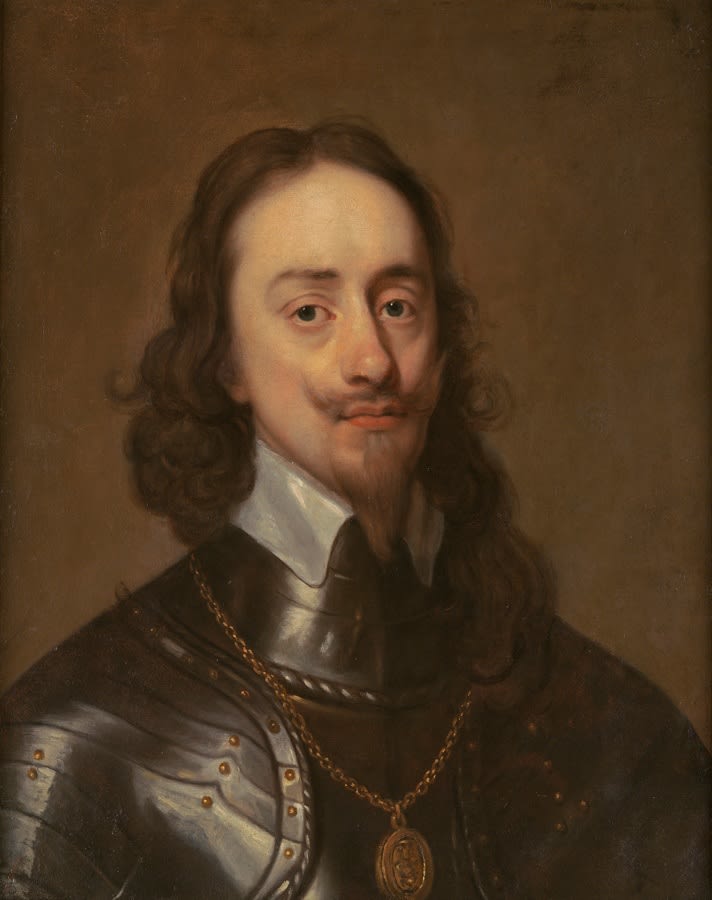
Circle of Sir Anthony van Dyck
To view all current artworks for sale visit philipmould.com
This portrait is an accomplished version of one of Van Dyck’s finest portraits of Charles I. The original, a full length, was painted c. 1638, and shows Charles in full armour, holding a commander’s baton, his hand resting on a sword, with an imperial crown and helmet in the background. The best version is in the Hermitage in St Petersburg. The portrait became one of the most popular of Charles, especially during and after the Civil War, as royalist adherents sought images of the king as a military hero.
This head and shoulders version suggests superbly the brittle hauteur of the King. Charles, with his upturned moustache and martial pose is presented as a magnificent image of nobility, with a face deliberately rendered as an imperious mask of cold dignity. In the full-length version, the perspective of the picture is designed to make the King appear tall, and, with his costume, ready for battle. In reality he was short, and never fought personally nor led troops in the Civil War.
Charles’ legacy, however, is more fitted not to the subject matter of his portrait, but the presence of such portraits themselves. He was the most diligent and enthusiastic supporter of the arts in English history – as Rubens said, ‘the greatest art-lover among the princes of the world’. He collected hundreds of important pictures from across Europe, and turned the Royal Collection into a model of its type. His patronage of Van Dyck, who arrived for his prolonged stay in 1632 and whom Charles knighted, led to a revolution in English portraiture.